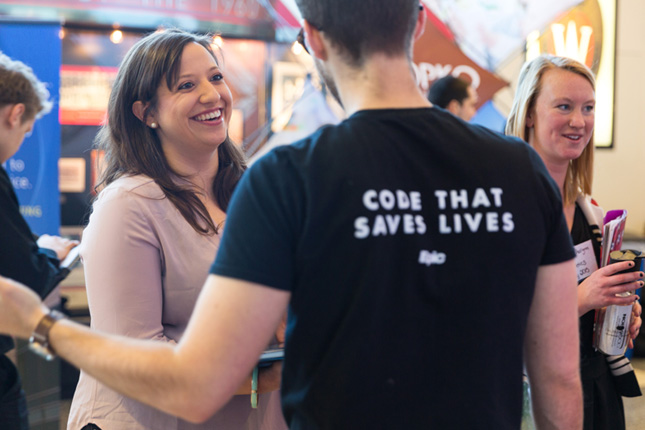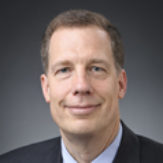
Whether they’re analyzing numbers in economics problem sets, working with classmates in the chemistry lab or constructing an effective argument for a philosophy paper, liberal arts students in the University of Wisconsin-Madison’s College of Letters & Science are honing the kinds of skills employers say they want.
Among them: analytical problem-solving and effective communication skills; creativity; appreciation for diverse cultures and backgrounds; an understanding of values and ethics; the ability to weigh evidence and draw conclusions; and the drive to find, organize and evaluate information.
And new data from two comprehensive surveys, conducted as part of the L&S Career Initiative (LSCI), show L&S alumni are reaping the benefits of those widely-applicable skills after graduation. Nearly 90 percent of respondents are employed full-time, attending graduate school or both.
The surveys, which polled graduates from the 2012-2012-13 academic year academic year and those from 2003-04 to 2005-06, will provide important baseline data for the LSCI as it moves forward with an ambitious, integrated model of career preparation.
“Our liberal arts graduates are thriving, whether they choose to seek full-time employment or attend graduate school,” says L&S Dean John Karl Scholz, who launched the LSCI in 2013.
“These data confirm just what we had hoped: that our graduates believe their academic preparation in L&S advanced their professional success and enhanced their quality of life.”
The survey results come at a time when much of the national conversation about higher education is focused on return on investment, including the Obama administration’s recent release of the College Scorecard.
The survey of alumni one year after graduation shows L&S graduates outperforming national benchmarks in employment, underemployment and unemployment rates. Among the results:
- 86.8 percent are either employed full time, attending graduate school, or both employed and continuing their education. That’s above the 73.4 percent placement rate for public institutions nationwide as reported by the National Association of Colleges and Employers.
- Of those working full time, 64.3 percent are in jobs that require a bachelor’s degree, compared to about 52 percent of recent college graduates surveyed in 2013 research from the Center for College Affordability and Productivity.
- 5.9 percent are not engaged in paid employment; the national unemployment rate for young adults aged 22-26 with bachelor’s degrees is 7.5 percent, according to the Georgetown Center on Education and the Workforce. Of that 5.9 percent, less than one-third have either been laid off or have not found a job since graduation.
The survey of alumni eight to 10 years after graduation shows an even higher employment rate: 89.4 percent are either employed full time, attending graduate school or employed and continuing their education. Of those employed full time, 77.6 percent hold positions requiring a bachelor’s degree. Just 4.3 percent of the mid-career alumni are not engaged in paid employment; of those, more than 60 percent have chosen not to be employed or are not working because of family responsibilities.

Our liberal arts graduates are thriving, whether they choose to seek full-time employment or attend graduate school.
Kari Lauritsen, talent management director at American Family Insurance, says L&S graduates exhibit valuable qualities that lend themselves to career success, including: the ability to understand customers’ needs and concerns, think critically, communicate effectively, collaborate, and adapt to an ever-changing work environment.
“Individuals can be taught the technical skills,” Lauritsen says. “But it’s not always easy to find the blend of technical expertise and the soft skills that we look for in employees. Liberal arts has been an area where we tend to find that blend.”
Michael Witt (B.A.’90, Political Science and Psychology), a national recruiter and senior vice president at Robert W. Baird’s Madison West office, says some of the most successful financial advisors he’s met in his 25 years in the business have been liberal arts graduates.
“It is crucial that they have life experience and the ability to communicate with clients and gain their trust,” he says.
Financially, L&S alumni are earning competitive salaries across a wide range of careers.
Of the young alumni working full time, approximately 76 percent earn annual salaries of $30,000 or more. Meanwhile, 55.4 percent of the mid-career alumni holding full-time positions earn salaries of $60,000 or more, with 20.6 percent earning $100,000 or more.
Across both surveys, more than 90 percent of alumni say they would choose to attend UW-Madison again. And more than 70 percent of those employed full-time from both alumni subsets believe their academic preparation at UW-Madison has given them an advantage over employees from other institutions. Furthermore, when asked “How much has your overall quality of life been enhanced by your UW-Madison undergraduate experience?” alumni responded positively, ranking approximately four out of a possible five points on average, with five being the highest score.
Amid the good news, the L&S Career Initiative and Career Services team sees room for improvement. The young alumni data reinforces the need for career planning — and action — earlier in the college experience: Recent graduates who began applying for jobs during their senior years were significantly more likely to land full-time positions than those who waited until after graduation.
Dean Scholz launched the L&S Career Initiative to help UW-Madison liberal arts students identify their strengths and interests, develop professional networks and think beyond their degrees much earlier during their time on campus. As part of the LSCI, the college offers a second-year career development course (Inter-LS 210), a career-focused residential learning community (Career Kickstart), and numerous additional opportunities to develop critical skills and connect with alumni and employers.
“We want to encourage students to begin thinking about their career and life goals much earlier, and then help them realize those goals,” says Rebekah Paré, executive director of the L&S Career Initiative and Career Services.
The 2012-13 class survey is based on 1,376 responses out of a possible 3,206 (42.9 percent response rate); the 2003-2006 graduate survey is based on 2,523 responses from a possible 5,118 (49.7 percent). Both response rates far exceed industry averages. The LSCI team partnered with the University of Wisconsin Survey Center and the Wisconsin Foundation and Alumni Association to conduct the surveys.

